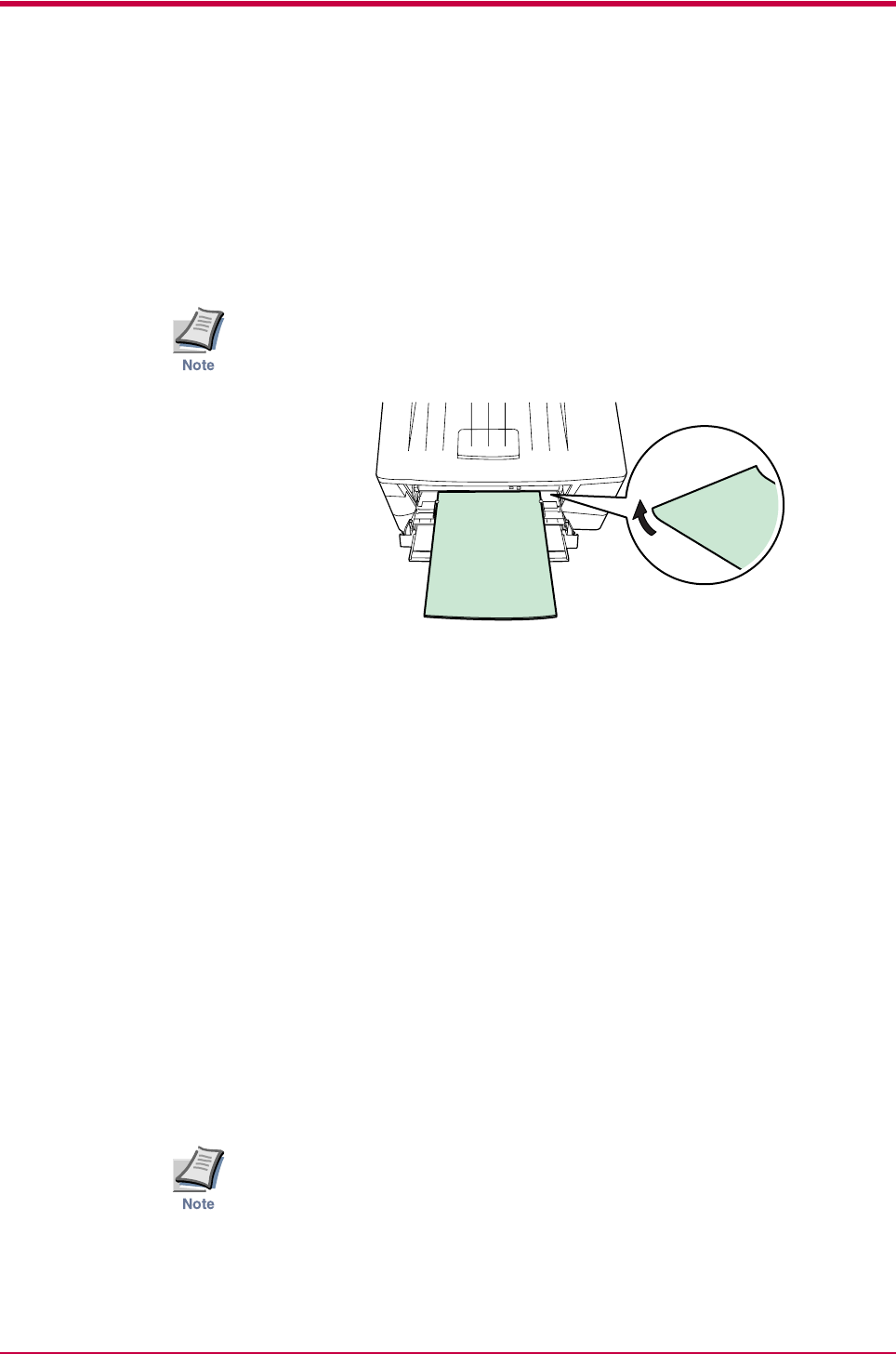
Special Paper
4-10
Thick Paper
Fan the stack of paper and align the edges before loading them in the MP
tray. Some types of paper have rough edges on the back (those are created
when the paper is cut). In this case, put the paper on a flat place and rub
the edges once or twice with, for example, a ruler to smooth them in the
same way as described in Postcards on page 4-9. Feeding rough edged
paper may cause paper jams.
If the paper jams even after you smooth it out in such a way, set the paper
in the MP tray with the leading edge raised up a few millimeters as shown
in the illustration.
Figure 4-4
Colored Paper
Colored paper should satisfy the same conditions as white bond paper,
listed in Table 4-1 on page 4-2. In addition, the pigments used in the paper
must be able to withstand the heat of fusing during the printing process
(up to 200°C or 392°F).
Preprinted Paper
Preprinted paper should have a bond paper base. The preprinted ink must
be able to withstand the heat of fusing during the printing process, and
must not be affected by silicone oil.
Do not use paper with any kind of surface treatment, such as the type of
paper commonly used for calendars.
Recycled Paper
Select recycled paper that meets the same specifications as the white bond
paper (see Table 4-1 on page 4-2.) except whiteness.
Before purchasing recycled paper, test a sample on the printer and check
that the printing quality is satisfactory.


















